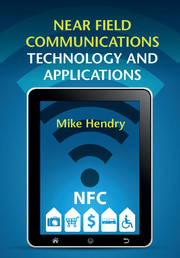Book contents
- Frontmatter
- Contents
- Part I Introduction
- Part II Technology
- 3 Standards
- 4 Modes of operation
- 5 RF requirements and components
- 6 The Secure Element
- 7 Tags and terminals
- 8 NFC apps
- 9 Infrastructure requirements
- 10 Security
- 11 Interoperability
- Part III Applications
- Part IV Implementation
- Appendix A Glossary
- Appendix B Standards
- Index
- References
9 - Infrastructure requirements
from Part II - Technology
Published online by Cambridge University Press: 05 December 2014
- Frontmatter
- Contents
- Part I Introduction
- Part II Technology
- 3 Standards
- 4 Modes of operation
- 5 RF requirements and components
- 6 The Secure Element
- 7 Tags and terminals
- 8 NFC apps
- 9 Infrastructure requirements
- 10 Security
- 11 Interoperability
- Part III Applications
- Part IV Implementation
- Appendix A Glossary
- Appendix B Standards
- Index
- References
Summary
The need for structure
In Chapter 1 we showed that different players have different, but equally valid, views of what NFC is, and in which sectors the most important applications lie. Because of this, they also have different views as to who is responsible for developing and managing NFC applications and, most important, for managing the relationship with the user or end customer.
In practice responsibility for developing, delivering and promoting any form of commercial NFC service will require co-operation between technology companies, Service Providers and Mobile Network Operators, and the users will be customers of all three groups.
While it is possible for a phone manufacturer to deliver a phone with some built-in apps, even these apps depend on external tags and standards in order to be any more than technology demonstrators. Service providers can deliver pilot projects by buying and distributing phones, and by buying data services from one or more MNOs; but to derive income from that service they need a more formal agreement on the business models and roles each will adopt and how revenue and tasks will be allocated, including the customer support each will provide. And for that service to extend to a wide range of consumers, each with his or her own model of phone and buying different service packages from the mobile network of their choice, there need to be standards not only for the technology but also for the functions and roles that each company will perform. Although the mobile world is a fast-moving competitive marketplace, customers are likely to be confused if every service operates in a completely different way; some common features and interfaces are likely to be helpful.
Information
- Type
- Chapter
- Information
- Near Field Communications Technology and Applications , pp. 93 - 108Publisher: Cambridge University PressPrint publication year: 2014
